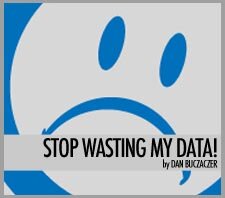Collaboration: A Conversation With Your Consumer
Posted by Chris Blumberg | April 12, 2011
In our industry, collaboration is put into practice every day. Whether it’s a group of employees working towards a common objective, agencies swapping secrets to execute a campaign, or a community of fans working together to get their favorite actor cast as the next Peter Parker, the idea of coming together to achieve a shared goal is a beautiful thing. But what really gets us at Denuo excited is a new kind of collaboration in which brands directly engage with consumers to create something neither group could do on their own. You may think you’ve heard this pitch before, just with a different label: crowdsourcing. But true collaboration is something different.
Crowdsourced campaigns are typically very straight forward: a brand makes a request for a specific output and individuals are motivated to participate by some sort of reward. There are tons of examples of companies who have had success with these types of campaigns, especially when they are consumer facing. But crowdsourcing isn’t truly collaborative. In fact it’s just a hair different from outsourcing. But what makes collaboration special is the opportunity it provides for brands to speak directly with their primary consumers, resulting in insights that can be applied across business units.
We’ve seen collaboration result in new products, processes, and consumer outreach programs. This year alone, Wrangler asked its fans to invent the next great jean design, is asking consumers where they should spend their grant dollars and volunteer hours, and Fashion Stake is letting customers decide what items go from sample to retail. Collaboration in this way provides an opportunity for loyalists to directly influence the direction of their favorite brands, while some even serve as advocates. Who doesn’t want to show-off their newly created Ben & Jerrys ice cream flavor? Certainly, there are risks associated with these types of campaigns, and in 2011 two of the more successful and highly visible came under public attack.
First, Pepsi was forced to deal with cheating allegations by participants in their online fundraising contest, Pepsi Refresh. Around the same time, Doritos was hit with a whirlwind of controversy when one of the submissions to their Crash the Super Bowl campaign created uproar amongst the Catholic community. You can read more about each brands response here and here, but below you’ll find 3 lessons we learned from these incidents:
• Lesson 1: Communication is Key –Ongoing community management can be the difference between success and failure when collaborating with consumers. Just like a project handled internally, it’s key that everyone involved remains up to speed on the project as it progresses. Much controversy can be avoided by simply addressing community member’s questions and concerns as they arise. Collaboration creates a platform for open dialogue between brand and user, so why not take advantage?
• Lesson 2: Be Proactive, Not Reactive – Speed is mandatory whenever the community starts to show signs of agitation. The longer you let concerns hang out there, the worse things will likely get. More people will take notice, mob mentality kicks in, and next thing you know you’re dealing with a full blown riot. Nip controversy in the bud before it has a chance to fester. As soon as you notice unrest amongst the community, start preparing a response. The worst thing you can do is let the unrest build, and hope it’ll magically go away.
• Lesson 3: Be Transparent – It’s easy to try and ease community concerns with a simple “don’t worry, we got this.” But collaboration with consumers should spark open dialogue, so don’t be afraid to be honest. Open the curtains and give individuals a peak at what’s being done to address the issue at hand. Instead of encouraging consumers to trust the process, Pepsi may have gotten a better response from the community if they had explained what that process was, and provided ongoing updates as the investigation took place.
The opportunity to collaborate with influencers and loyalists is undoubtedly an exciting proposition. In the coming weeks, we’ll be looking at different aspects of the collaboration process, including determining the potential value for a client, building the communication scaffolding to do it effectively, and managing it throughout. No one knows where that next big idea will come from, but with collaboration you put the power to innovate directly in the hands of those that know your brand best: the consumer.
Leave a Comment
RSS feed for comments on this post · TrackBack URI


